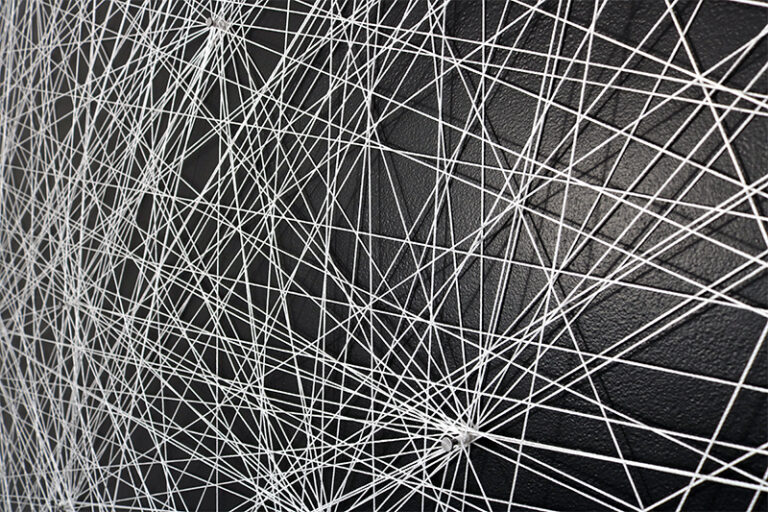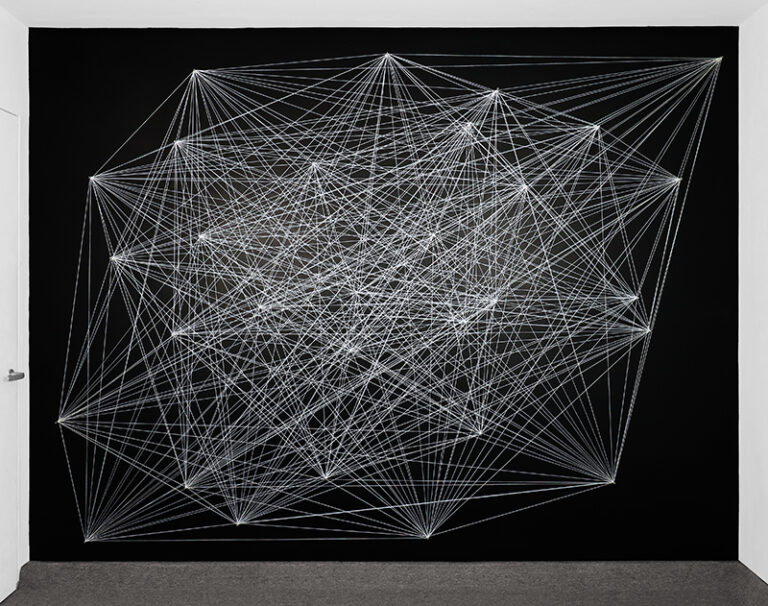Wall Drawing #815
March 1997
Thirty randomly placed points connected to one another using nails, white string on a black wall
First drawn by: Anders Hagman, Barbara O’Brien, Rose Olson
First installation: Montserrat College of Art Gallery, Beverly, Massachusetts
This installation size: 96 x 128 inches (243.8 x 325.1 cm)
Signed on accompanying certificate
(Inventory #30329)
Exhibited March 29, 2019 – June 15, 2019
Sol LeWitt
Wall Drawing #815
March 1997
Thirty randomly placed points connected to one another using nails, white string on a black wall
First drawn by: Anders Hagman, Barbara O’Brien, Rose Olson
First installation: Montserrat College of Art Gallery, Beverly, Massachusetts
This installation size: 96 x 128 inches (243.8 x 325.1 cm)
Signed on accompanying certificate
(Inventory #30329)
Exhibited March 29, 2019 – June 15, 2019

